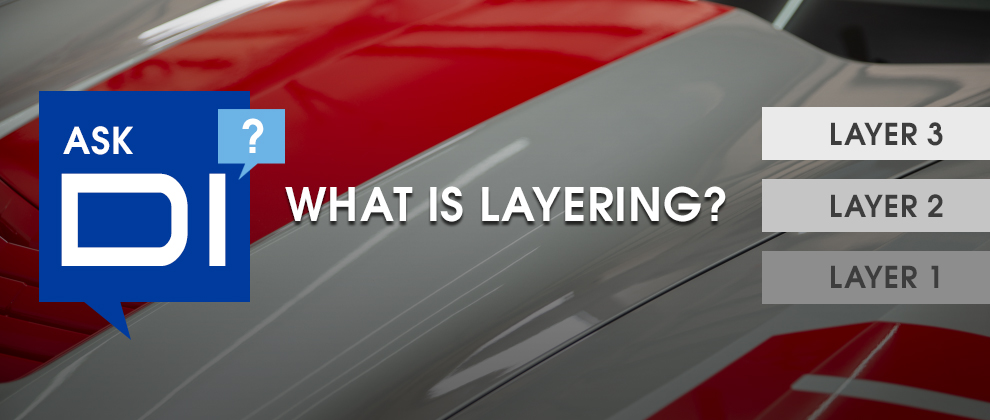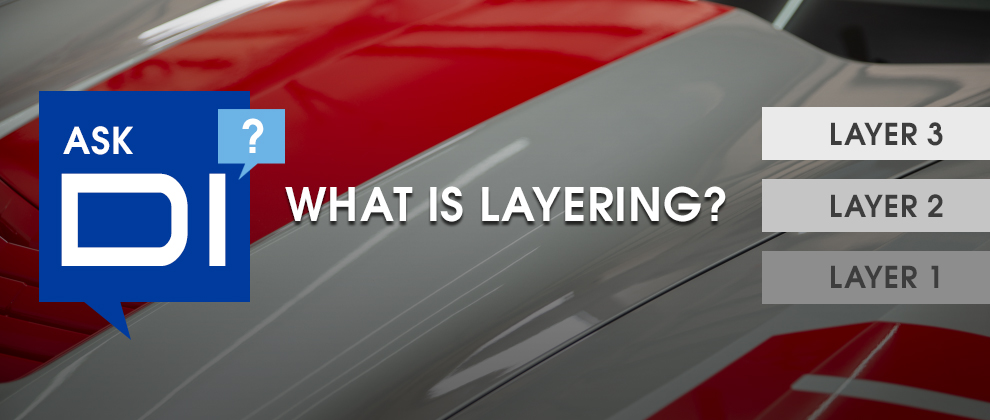
What is layering? The Detailed Image Detailing Dictionary’s definition of layering is as follows:
- Multiple applications of a paint or coating over a substrate, intended to produce a thicker final result or “film build”.
- Multiple applications of a sealant or wax protecting the paint or clear coat.
The most simplistic way to explain it is that it is the action of applying multiple layers of a protection over your clear coat that includes coatings, sealants, and waxes. When it comes to detailing and layering there are so many possibilities from the product type to the brand.
An example of layering is a coating, then a second layer of coating, then a top coating. Or a more traditional layering method is a sealant then a wax. Between the three different kinds of protection and all the brands available, there are a vast amount of combinations.
Why would you layer your protection?
- Layering can extend the total life of your protection. For example, with a 1-year coating with a 3-month spray on top coating, you can hypothetically get 1 year and 3-months of protection. I say hypothetically because there are so many factors that come into play when it comes to the longevity of your protection like driving conditions, whether, garage kept or not, to name a few. Another important factor to consider is how well the next layer adheres to the previous layer.
- Layering certain products could give you a different gloss or shine to your paint.
- Layering can change the surface tension affecting how water comes off your vehicle.
Can you apply too many layers?
Yes, you can. At a certain point, there is a diminishing return when it comes to layering products. It will eventually affect the gloss or shine and/or surface tension. Depending on your product selection you could get an undesirable result. Also, putting 2 layers of a 1-year coating doesn’t mean you get 2-years of protection.
When it comes to coatings, Jean-Claude Corcoran wrote a great article with an accompanying video, Layering Coatings: How Much is too Much?. Don’t forget to check out the comment section of that article, there is great conversation there.
For waxes and sealants, 1-2 layers is optimal in most cases. However, there can be times that you likely don’t need to put on more than 1 layer. This is due to when you are applying a 2nd layer, you’re removing the 1st layer due to the solvents used as a carrying agent in the second layer of product. Think of it as if you rewet the wax and then wipe off the residue. Rodney Tatum wrote Layering: Waxes and Sealants, that covers this topic and is worth a read.
Layering Dos
- Apply the most durable layer first.
- We recommend sticking with the same type of coating technology when applying a top coat. For example, use a SiO2 top coating over a SiO2 coating.
- Do layer a wax over a sealant.
- Carefully read the directions and labels to get the best results to make sure different product layers work with each other.
- Do allow proper curing time to get the best results (read the product labels).
Layering Don’ts
- We do not recommend putting traditional sealants (non sio2 based) or waxes over a coating. Coatings are made to repel and applying a sealant or wax will likely give you very limited additional protection.
- Do not apply the less durable layer on the bottom.
- Do not apply additional layers without waiting the minimum amount of cure time.
What are your thoughts on layering? Did you use products where the layers didn’t work out? We’d love to hear about your experiences with layering.
